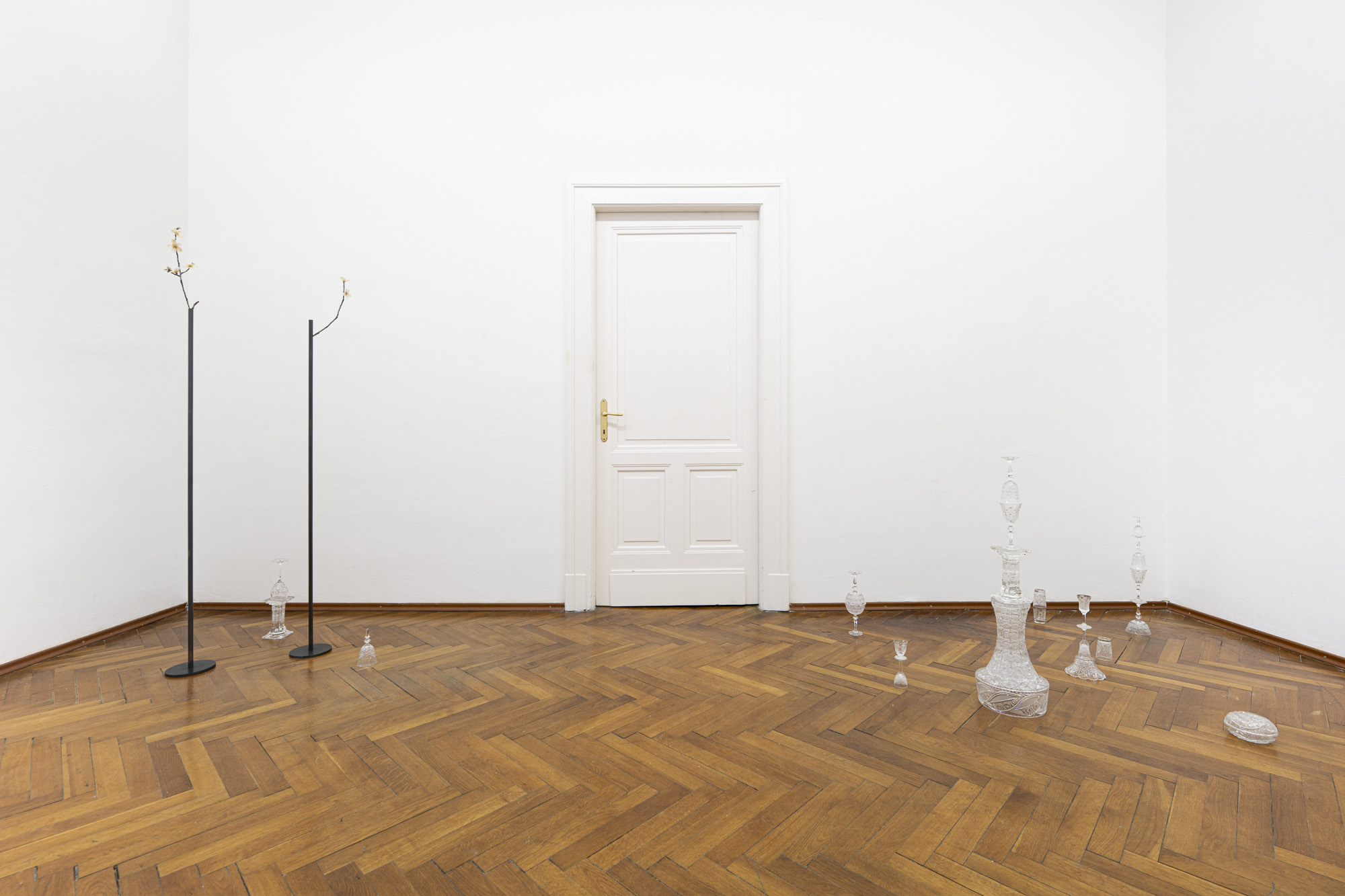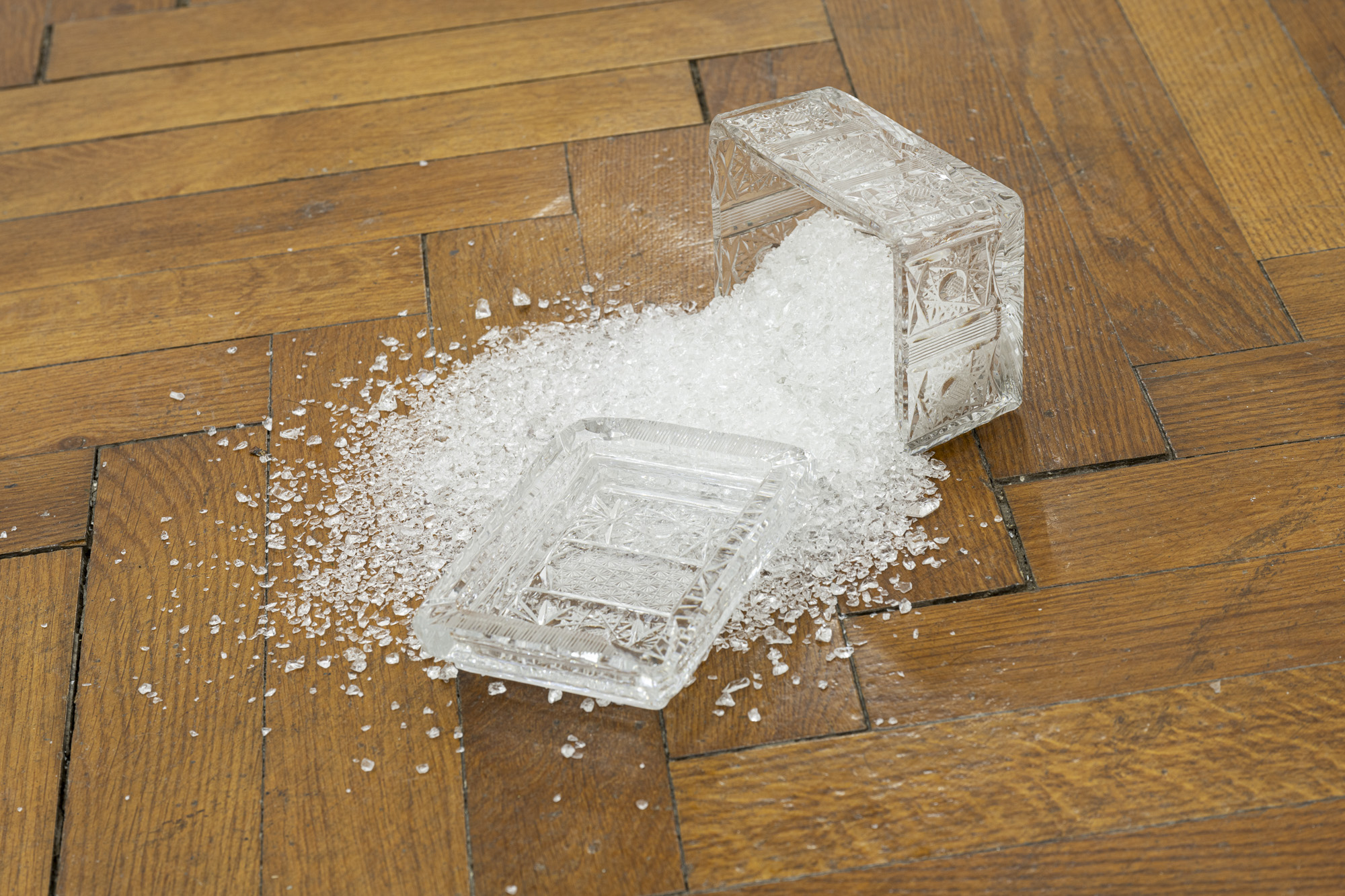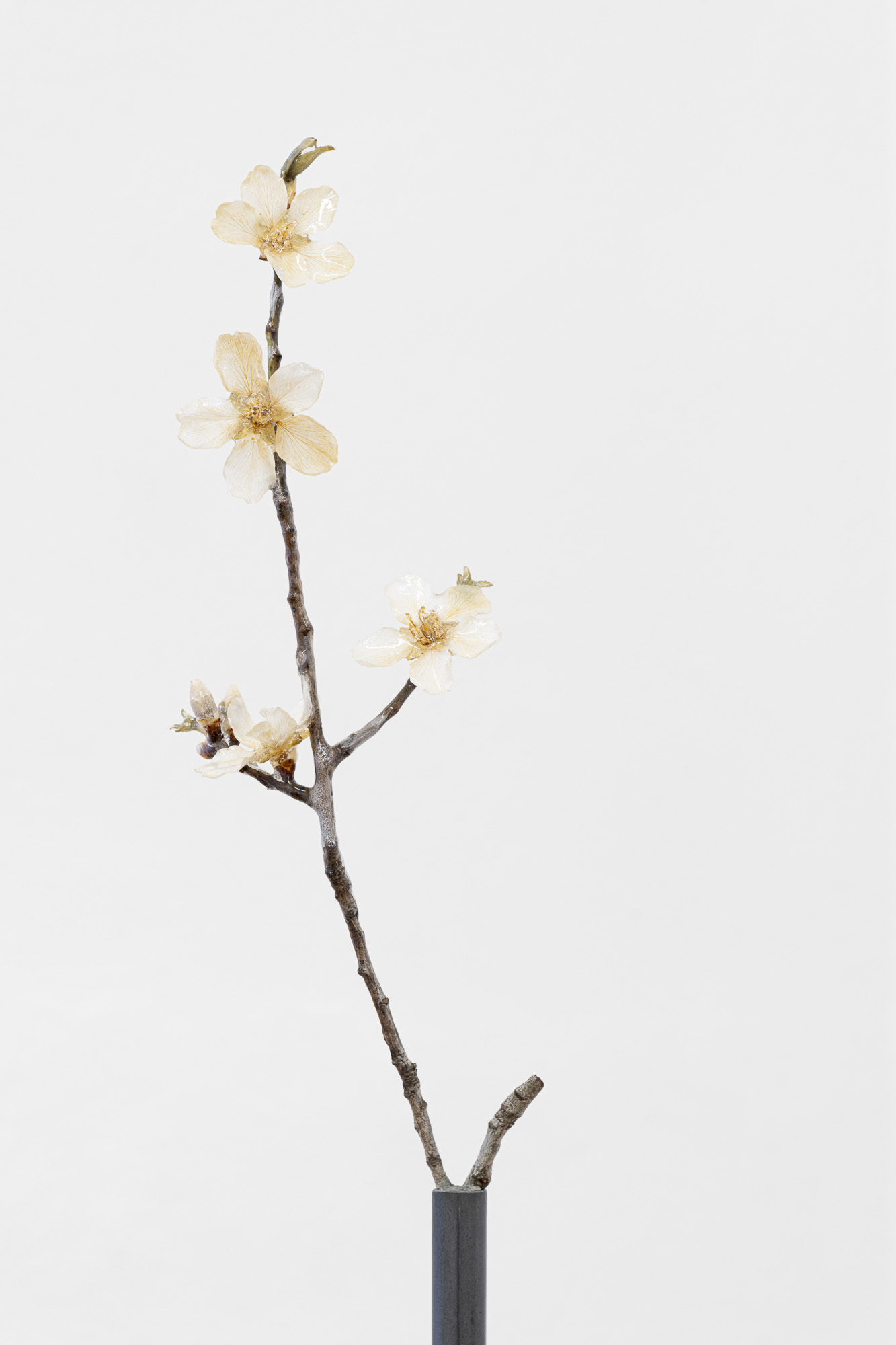Fragments of Fragility
2025, exhibition project
The exhibition Fragments of Fragility presents a symbolic and direct reflection on fragility. No matter if we address the contemporary world, the ecological crisis, personal fragility or everyday situations and relationships, insecurity has become the new norm, with stability becoming an unexpected luxury.
The minimalist, variable installation Fragile, which has been continuously updated and reinterpreted since 2012, commands attention within the gallery spaces. This artwork has undergone various transformations in its installation, exhibition, and ideological contexts. At its core, it is laid out on the floor in its simple essence, instantly drawing viewers in with its appealingly fragile aesthetic. It triggers emotional associations while directing the way we behave in the space. Organically arranged crystal glasses, bowls, decanters, and vases—sourced from Németh's mother and acquaintances—stimulate our imagination. A simple gesture gradually modulates the tension created by their ephemeral balance, as they are held together solely by the laws of physics and the respect of visitors. Drawing on personal memories of old items and an awareness of our own temporality and uncertainty, these clear and luminous monuments remain open-ended, inviting a wide range of interpretations.
The artist continues in a similar vein with works from his latest project, The Herbarium of Time II (2024), where he transforms fragility and vulnerability into conscious care, striving to halt time and preserve the present. He has encapsulated delicate tiny flowers and a twig in resin, by which they serve as a simple yet striking memento of the desire to deny impermanence. While this impulse contradicts the natural cycle of life, it stands as a silent and melancholic symbol of ephemeral moments.
Michal Stolarik
The minimalist, variable installation Fragile, which has been continuously updated and reinterpreted since 2012, commands attention within the gallery spaces. This artwork has undergone various transformations in its installation, exhibition, and ideological contexts. At its core, it is laid out on the floor in its simple essence, instantly drawing viewers in with its appealingly fragile aesthetic. It triggers emotional associations while directing the way we behave in the space. Organically arranged crystal glasses, bowls, decanters, and vases—sourced from Németh's mother and acquaintances—stimulate our imagination. A simple gesture gradually modulates the tension created by their ephemeral balance, as they are held together solely by the laws of physics and the respect of visitors. Drawing on personal memories of old items and an awareness of our own temporality and uncertainty, these clear and luminous monuments remain open-ended, inviting a wide range of interpretations.
The artist continues in a similar vein with works from his latest project, The Herbarium of Time II (2024), where he transforms fragility and vulnerability into conscious care, striving to halt time and preserve the present. He has encapsulated delicate tiny flowers and a twig in resin, by which they serve as a simple yet striking memento of the desire to deny impermanence. While this impulse contradicts the natural cycle of life, it stands as a silent and melancholic symbol of ephemeral moments.
Michal Stolarik



















